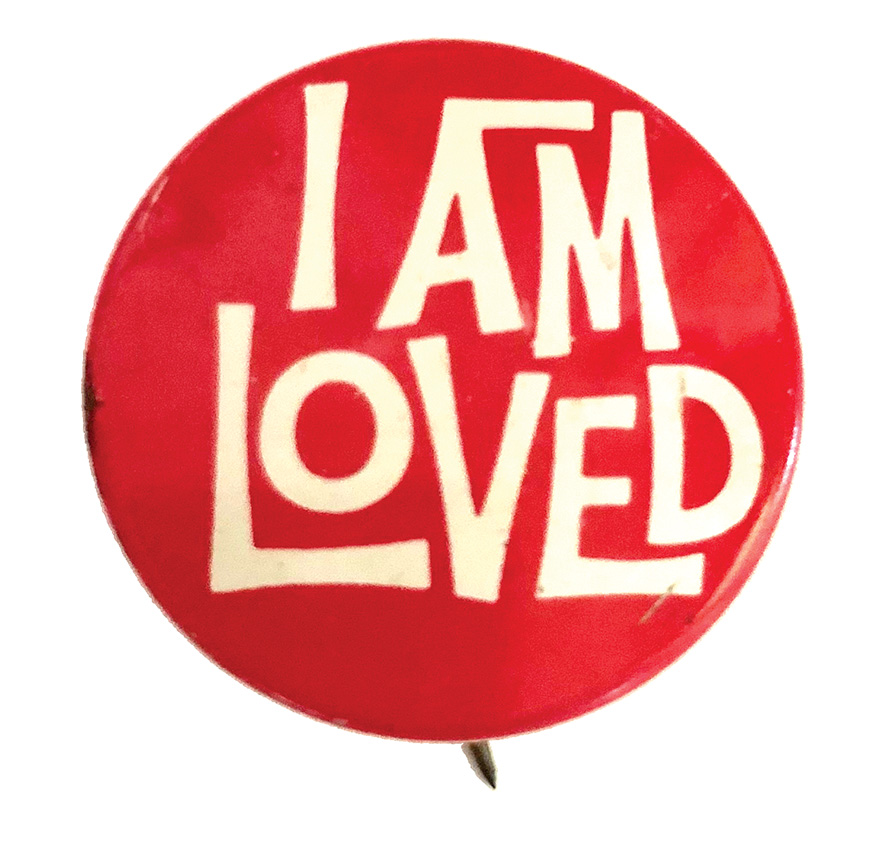
Dorri Partain
Contributor
It’s a small item with a big message that’s been translated into multiple languages and sent to loved ones around the world.
The iconic “I Am Loved” pin-back button made its debut in Kansas City in 1967 as part of an advertising campaign for Helzberg Diamond Shops.
Morris Helzberg opened the first family-named jewelry store in 1915, on Minnesota Avenue in downtown Kansas City, Kansas. With his health failing a few years later, his son Barnett was tasked with running the store at age 14. The business flourished, and another location was opened on the Country Club Plaza, as Helzberg’s House of Treasures, offering jewelry, china, and silver in 1948.
Following his marriage to Shirley Bush in 1967, Barnett Helzberg Jr. jotted down an idea that expressed how he felt as a newlywed, and shared with his brother. His brother liked it, but his father, Barnett Sr., did not, thinking it appealed to the wrong demographic. The store’s art director Claude Burk took the idea and created an ad, along with the wordmark on the one-inch red and white button.
The ad was published in November of that year and within a few weeks they knew it was a success, as the 50,000 buttons ordered disappeared from stores and appeared on lapels and collars of recipients across town and beyond.
Soon, Helzberg’s was known as the jewelry store that offered the free buttons. The three-word sentiment was trademarked in 1968 to prevent other businesses from using the same.
In the 1980’s, the style was changed from a 1960’s font to a more classic style and “I Am Loved” was translated into French, Spanish, Russian, Polish, Japanese, Italian, German, Hebrew, Chinese, and Portuguese.
Recently, the style has reverted to resemble the original font, but with a heart replacing the “O” in “loved”, and seasonal designs have been offered as well. Just as always, the buttons are offered free to customers to share with loved ones.
















